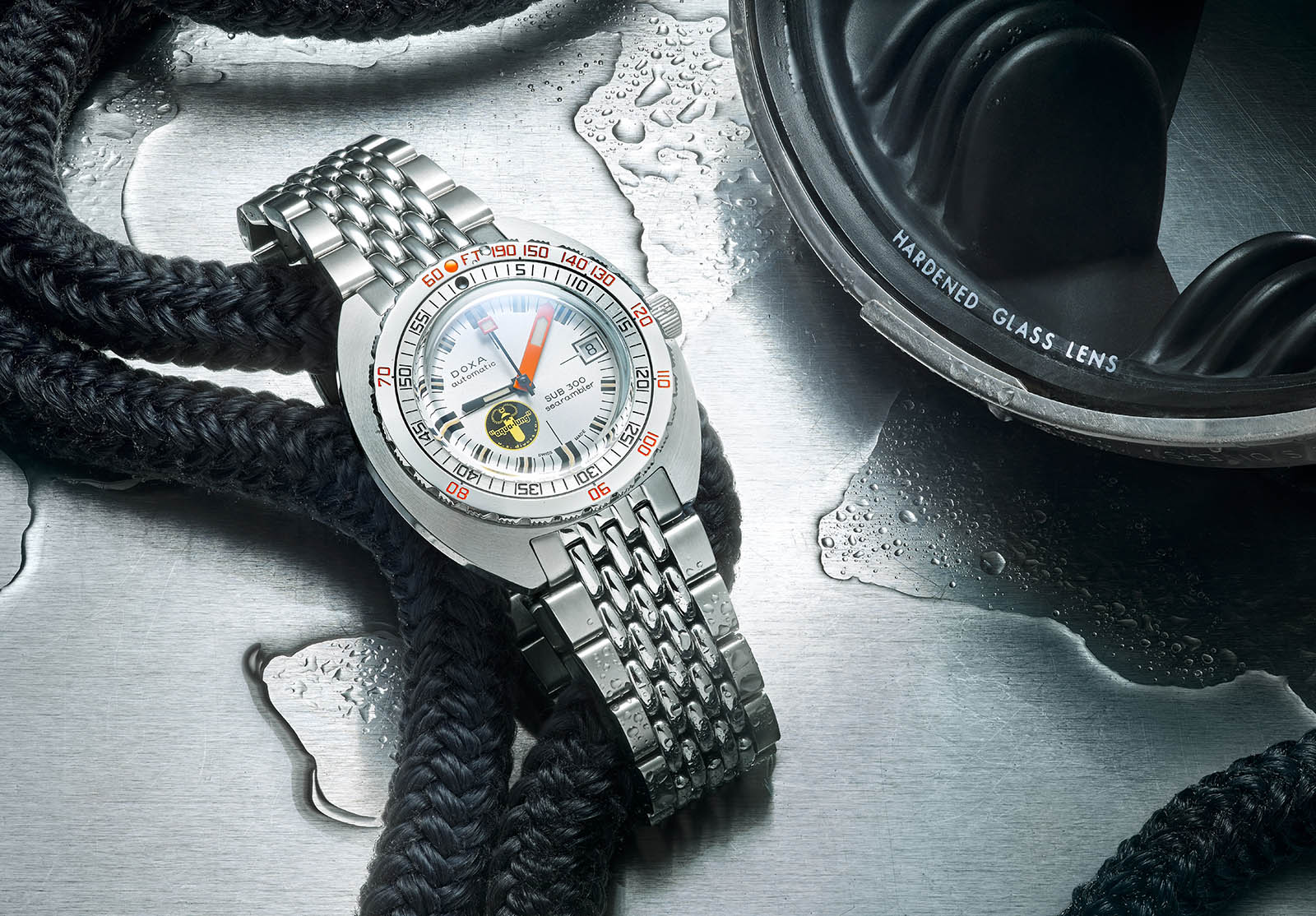Introducing the Doxa Sub 300 Searambler “Silver Lung”
A prototype remade as a limited edition.
To mark the 50thanniversary of the Sub series last year, Doxa launched a faithful reissue of one of its most coveted watches – the Sub 300 Professional prototype dubbed “Black Lung” by collectors, a reference to its yellow-on-black Aqua-Lung logo. The emblem never made it to final production as it compromised legibility whenever the black hands swept past. Doxa instead replaced the “Black Lung” with a line drawing of the logo.
While arguably the best known variant, the Sub 300 Professional with an orange dial wasn’t the only one bearing a blacked-out Aqua Lung logo as a prototype. All three versions of Doxa’s dive watches did, including the Sharkhunter, which had a black dial, and the Searambler. But while a handful of Sub “Black Lung” watches made their way into the market, the other two prototype variants never did.
Now Doxa has remedied that with the Sub 300 Searambler limited edition bearing the classic yellow-on-black logo to mark the 75thanniversary of Aqua-Lung scuba apparatus, hence the “Silver Lung” nickname. It’s the first time the prototype Searambler has been commercially available, albeit as a serially produced limited edition.
The new Searambler sticks to the same successful formula, retaining the attributes that has made the original Sub 300 a success when it was launched in 1967, and something of a cult dive watch today.
From the quirky typography to its square-tipped second hand, all the elements have been exactly reproduced. Finished in a silvered, brushed sunray pattern, the Searambler dial is arguably less polarising than those found on its brightly coloured cousins. The dial, smallish relative to the case, is topped by a domed sapphire crystal to mimic the look of acrylic.
And while the dial isn’t in Doxa’s iconic orange, the watch does have a practical edge over the “Black Lung” – the wide minute hand is in orange. A standard feature on the Searambler, the contrast colour minute hand eliminates the possibility of confusing the two hands, or mixing them up with the black Aqua-Lung logo.
It has the signature tonneau-shaped steel case topped with a serrated, rotating bezel engraved with Doxa’s patented “no deco” outer scale that displays the decompression stops according to the US Navy’s dive table (which is today outdated and no longer in use). And it’s finished with a retro beads-of-rice bracelet that tapers to an integrated wetsuit extension inside the clasp.
The case measures 42.5 mm in diameter by 13.4 mm thick. And inside is the self-winding, chronometer-grade ETA 2824-2 movement with a date function.
Price and Availability
The Sub 300 Searambler “Silver Lung” is limited to 300 pieces, and available for pre-order direct from Doxa at US$2190, instead of the retail price of US$2590. It is slated to ship in August.
Back to top.